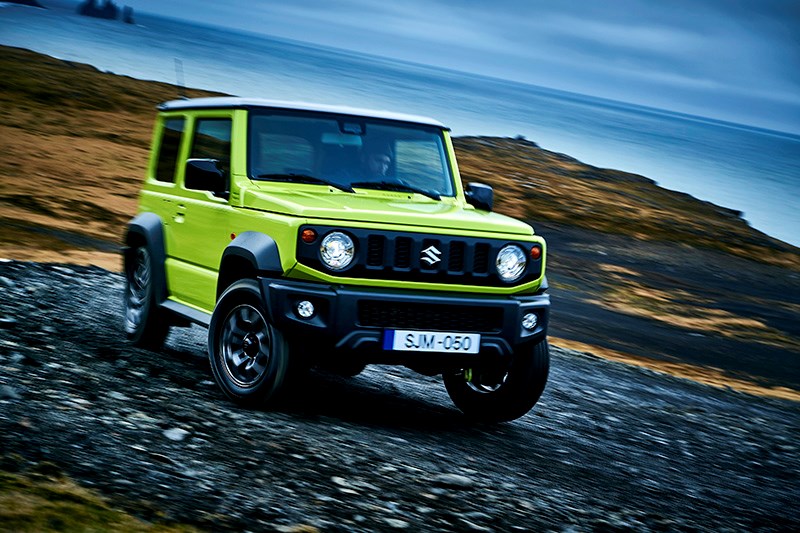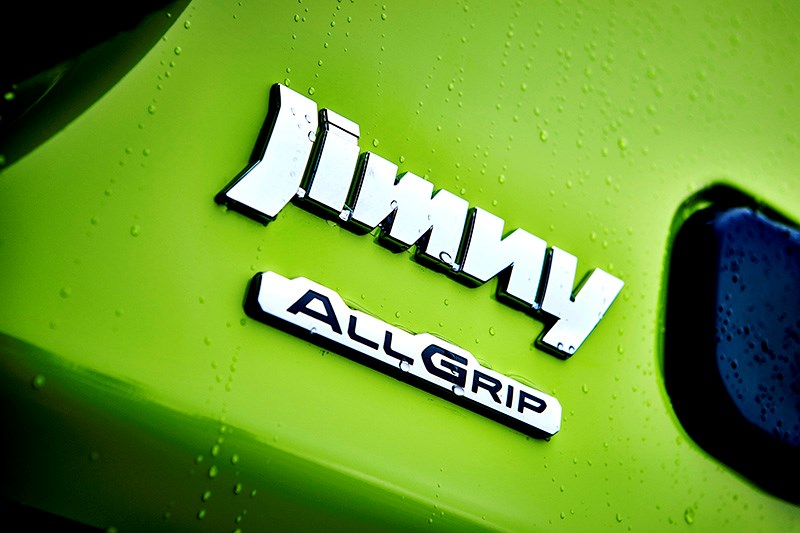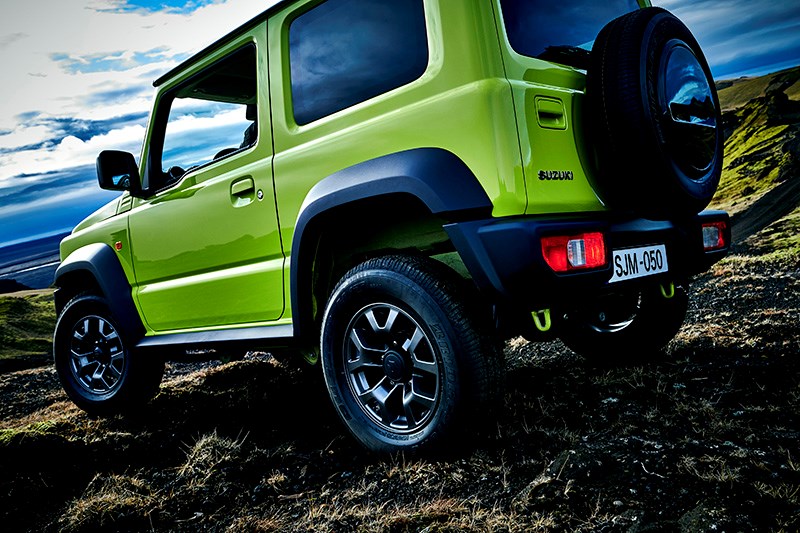► Fourth-gen Jimny driven
► The tough 4×4 has grown up…
► … but not too much!
Remember 1998? The film Titanic grossed $1 billion at box offices, Google was founded, and the current Suzuki Jimny, which you can still buy at time of writing, was launched. Talk about a long lifecycle…
But time waits for no SUV and now it’s time to test the next-gen 2019 Suzuki Jimny, set to hit UK roads in January 2019. Rivals? Err, not so much. There simply isn’t anything out there quite like it – cheap, practical to a point, extremely capable off-road and not too bad on it.

But with new colours and extra tech, Suzuki’s aiming for the mainstream lifestyle market as well as the traditional Jimny jousters out there on the farm. So how’s it gone? Read on for our full Suzuki Jimny review…
What’s new for the 2019 Jimny?
Happily, much of the recipe remains unchanged, which means a sturdy body-on-ladder-frame chassis (albeit strengthened for the fourth-gen Jimny), rigid axles with coil springs at both ends, and thin tyres that send twist through a selectable 4×4 system.
Most of the time, the Jimny operates as a rear-wheel drive car; drive is only sent to the front axle when the driver selects 4×4 via the manaul selector lever by the handbrake.

The transmission also features a low-ratio transfer gear that allows for more accurate torque distribution for low-speed off-roading. We’re driving a five-speed manual here; a four-speed auto is an option only on the top trim Suzuki Jimny.
There’s no slippy diff, but torque vectoring by braking performs a similar task when the friction levels drop.
What’s the new Suzuki Jimny like to drive?
On road, it takes a bit of getting used to if you’ve ever driven a small SUV that isn’t a Jimny. The two factors contributing here are the suspension – fat wheels and lots of travel in the dampers means a LOT of vertical movement – and electrically assisted recirculating ball steering, which is more complex than the de rigueur rack-and-pinion set-up found in most modern cars, but easier to package into what is an extremely short space under that clamshell bonnet.

This recipe results in a turn-in characteristic that – at first at least – feels more like a vague hint at a direction change rather than a meaningful steer in either direction. The considerable body movement pitches first at the front, with the rear following, and so you feel like you could make a sandwich between input and reaction.
It’s not an agile car this and feels quite off-putting if you’re used to a diet of mainstream hatchbacks and family cars. You do get used to this, of course, and we’d even go so far as to say it contributes to the Jimny’s character rather than being a black marker.
The engine (a 1.5-litre naturally aspirated four-cylinder, up from 1.3 litres in the previous car) and transmission feel and sound like they’re working incredibly hard when speeds climb, and at motorway pace – when you eventually get there – a sixth ratio does feel conspicuously absent…

However, we did come away impressed with the general ride quality on the roads around Frankfurt; Suzuki has fitted eight revised rubber bushings betwixt body and frame, and this adds valuable refinement to the experience. That’s something certainly lacking in the 1998 model.
What about the Suzuki Jimny off-road?
Now this is where the Jimny really needs to impress. On the launch event we were presented with a dusty track featuring a handful of relatively benign inclines and descents along with some fairly extreme axle articulation (we could touch the floor out of an open window at one point) but the Jimny just took it all in its stride.

We tried two-wheel drive, 4×4 and low-range modes, but came away feeling we’d only just scratched the surface of this car’s capability. It’ll be great to get it onto some properly challenging terrain and see just what it’s made of.
How about inside the Suzuki Jimny?
Simple, robust and easy to clean. The first point to make here is you can have either a decent-sized boot or four seats, but not both. Carrying a quartet of quadrupeds leaves you with a paltry 85 litres of luggage room – enough for a big handbag, basically.

The front seats fold down flat as well as the rears, however, and the 377-litre space elicited from switching to two-seat mode – a useful square shape that would easily accommodate a washing machine – features an easy-to-clean plastic coating. Wet wipes not included.
We’re driving the top-spec car, which gets a touchscreen nav that was so slow giving instructions we got lost almost immediately. We know, a bad workman and all that, but this unit really should be better. Thankfully it’ll also support Android Auto and Apple CarPlay – both far better solutions.

The rest of the cabin design surprised us in its robust yet reserved nature. If you take the Ignis, for example, with its poor-quality body-coloured plastic accents, it would have been all too easy for Suzuki to fall foul of the same here. But actually it’s clearly been designed for fitness of purpose instead – something we can very much get on board with.
What are the specs for the new Jimny?
There are two trims available:
- Suzuki Jimny SZ4
- Suzuki Jimny SZ5
The former features everything you really need, but the latter is the one most buyers will actually want – alloys rather than steel wheels, the seven-inch touchscreen sat-nav with smartphone link, LED headlights, climate control and heated front seats.
New Suzuki Jimny: verdict
It’s impossible not to fall for the Jimny. Just look at it! Suzuki’s designers have penned a shape that hits a sweet spot somewhere between cheeky, chunky and cheerful. That it drives noticeably better than the previous one isn’t a huge surprise given the two decades of development time it’s had.
But it’s still unique, both in its foibles and its positioning in the market. With that in mind, the extra colours on offer may just be a masterstroke for Suzuki, because now the Jimny is a car that captures attention quickly and retains it. The German public seemed captivated during our test drive, unable to look away once they’d spotted us.
Personally this tester would go SZ4, in Nato white, with steelies and some decent rubber.
More Suzuki reviews by CAR magazine